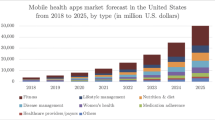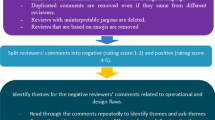Abstract
Wearable apps are becoming increasingly popular in recent years. Nevertheless, to date, very few studies have examined the issues that wearable apps face. Prior studies showed that user reviews contain a plethora of insights that can be used to understand quality issues and help developers build better quality mobile apps. Therefore, in this paper, we mine user reviews in order to understand the user complaints about wearable apps. We manually sample and categorize 2,667 reviews from 19 Android wearable apps. Additionally, we examine the replies posted by developers in response to user complaints. This allows us to determine the type of complaints that developers care about the most, and to identify problems that despite being important to users, do not receive a proper response from developers. Our findings indicate that the most frequent complaints are related to Functional Errors, Cost, and Lack of Functionality, whereas the most negatively impacting complaints are related to Installation Problems, Device Compatibility, and Privacy & Ethical Issues. We also find that developers mostly reply to complaints related to Privacy & Ethical Issues, Performance Issues, and notification related issues. Furthermore, we observe that when developers reply, they tend to provide a solution, request more details, or let the user know that they are working on a solution. Lastly, we compare our findings on wearable apps with the study done by Khalid et al. (2015) on handheld devices. From this, we find that some complaint types that appear in handheld apps also appear in wearable apps; though wearable apps have unique issues related to Lack of Functionality, Installation Problems, Connection & Sync, Spam Notifications, and Missing Notifications. Our results highlight the issues that users of wearable apps face the most, and the issues to which developers should pay additional attention to due to their negative impact.




Similar content being viewed by others
Notes
The random sample of 597 reviews was taken out of 5,751 low-rated reviews to achieve a confidence level of 99% and a confidence interval of 5%.
References
Ahola J (2015) Challenges in android wear application development. In: Proceedings of the international conference on web engineering, ICWE ’15. Springer, pp 601–604
Android Developers Documentation (2016a) Creating wearable apps. https://developer.android.com/training/wearables/apps/index.html. Accessed 2 Oct 2016
Android Developers Documentation (2016b) Filters on google play. https://developer.android.com/google/play/filters.html. Accessed 18 Dec 2016
Android Wear Center (2016) http://www.androidwearcenter.com. Accessed 9 Sep 2016
Bonato P (2010) Wearable sensors and systems. IEEE Eng Med Biol Mag 29 (3):25–36
Chauhan J, Seneviratne S, Kaafar MA, Mahanti A, Seneviratne A (2016) Characterization of early smartwatch apps. In: Proceedings of the 2016 IEEE international conference on pervasive computing and communication workshops, PerCom ’16. IEEE, pp 1–6
Chen N, Lin J, Hoi SC, Xiao X, Zhang B (2014) Ar-miner: mining informative reviews for developers from mobile app marketplace. In: Proceedings of the 36th international conference on software engineering, ICSE ’14. ACM, pp 767–778
Ciurumelea A, Schaufelbühl A, Panichella S, Gall HC (2017) Analyzing reviews and code of mobile apps for better release planning. In: Proceedings of the 24th IEEE international conference on software analysis, evolution and reengineering, SANER ’17. IEEE, pp 91–102
Cohen J (1960) A coefficient of agreement for nominal scale. Educ Psychol Meas 20:37–46
Di Sorbo A, Panichella S, Alexandru CV, Shimagaki J, Visaggio CA, Canfora G, Gall H (2016) What would users change in my app? summarizing app reviews for recommending software changes. In: Proceedings of the 24th ACM SIGSOFT international symposium on foundations of software engineering, FSE ’16. ACM, pp 499–510
Di Sorbo A, Panichella S, Alexandru CV, Visaggio CA, Canfora G (2017) Surf: summarizer of user reviews feedback. In: Proceedings of the 39th international conference on software engineering companion, ICSE-C ’17. IEEE Press, pp 55–58
Do Q, Martini B, Choo KKR (2017) Is the data on your wearable device secure? An android wear smartwatch case study. Softw: Pract Exp 47(3):391–403
Finkelstein A, Harman M, Jia Y, Martin W, Sarro F, Zhang Y (2017) Investigating the relationship between price, rating, and popularity in the blackberry world app store. Inf Softw Technol 87:119– 139
Fleiss JL, Cohen J (1973) The equivalence of weighted kappa and the intraclass correlation coefficient as measures of reliability. Educ Psychol Meas 33:613–619
Fu B, Lin J, Li L, Faloutsos C, Hong J, Sadeh N (2013) Why people hate your app: making sense of user feedback in a mobile app store. In: Proceedings of the 19th ACM SIGKDD international conference on knowledge discovery and data mining, KDD ’13. ACM, pp 1276–1284
Galvis Carreño LV, Winbladh K (2013) Analysis of user comments: an approach for software requirements evolution. In: Proceedings of the 2013 international conference on software engineering, ICSE ’13. IEEE Press, pp 582–591
Goko Store (2016) http://goko.me. Accessed 9 Sep 2016
Guzman E, Maalej W (2014) How do users like this feature? A fine grained sentiment analysis of app reviews. In: Proceedings of the 22nd IEEE international requirements engineering conference, RE ’14. IEEE, pp 153–162
Ha E, Wagner D (2013) Do android users write about electric sheep? Examining consumer reviews in google play. In: Proceedings of the 10th IEEE consumer communications and networking conference, CCNC ’13, pp 149–157
Harman M, Jia Y, Zhang Y (2012) App store mining and analysis: Msr for app stores. In: Proceedings of the 9th IEEE working conference on mining software repositories, MSR ’12. IEEE Press, pp 108– 111
Hoon L, Vasa R, Schneider JG, Mouzakis K (2012) A preliminary analysis of vocabulary in mobile app user reviews. In: Proceedings of the 24th Australian computer-human interaction conference, OzCHI ’12. ACM, pp 245–248
Keertipati S, Savarimuthu BTR, Licorish SA (2016) Approaches for prioritizing feature improvements extracted from app reviews. In: Proceedings of the 20th international conference on evaluation and assessment in software engineering, EASE ’16. ACM, pp 33:1–33:6
Khalid H, Nagappan M, Shihab E, Hassan A (2014) Prioritizing devices to test your app on: a case study of android game apps. In: Proceedings of the 22nd ACM SIGSOFT international symposium on foundations of software engineering, FSE ’14. IEEE, pp 610–620
Khalid H, Shihab E, Nagappan M, Hassan A (2015) What do mobile app users complain about? IEEE Softw 32(3):70–77
Lyons K (2015) What can a dumb watch teach a smartwatch?: Informing the design of smartwatches. In: Proceedings of the ACM international symposium on wearable computers, UbiComp ’15. ACM, pp 3–10
Martin W, Harman M, Jia Y, Sarro F, Zhang Y (2015) The app sampling problem for app store mining. In: Proceedings of the 12th IEEE/ACM working conference on mining software repositories, MSR ’15. IEEE, pp 123–133
Martin W, Sarro F, Jia Y, Zhang Y, Harman M (2017) A survey of app store analysis for software engineering. IEEE Trans Softw Eng 43(9):817–847
McIlroy S, Shang W, Ali N, Hassan A (2015) Is it worth responding to reviews? A case study of the top free apps in the google play store. IEEE Softw 34:64–71
McIlroy S, Ali N, Khalid H, Hassan A (2016) Analyzing and automatically labelling the types of user issues that are raised in mobile app reviews. Empir Softw Eng 21(3):1067–1106
Min C, Kang S, Yoo C, Cha J, Choi S, Oh Y, Song J (2015) Exploring current practices for battery use and management of smartwatches. In: Proceedings of the ACM international symposium on wearable computers, UbiComp ’15. ACM, pp 11–18
Mujahid S (2017) Determining and detecting permission issues of wearable apps. Master’s thesis, Concordia University, Montreal
Mujahid S, Sierra G, Abdalkareem R, Shihab E, Shang W (2017) Examining user complaints of wearable apps: a case study on android wear. In: Proceedings of the 4th IEEE/ACM international conference on mobile software engineering and systems, MobileSoft ’17. IEEE
Nagappan M, Shihab E (2016) Future trends in software engineering research for mobile apps. In: Proceedings of the 23rd IEEE international conference on software analysis, evolution, and reengineering, SANER ’16. IEEE
Pagano D, Maalej W (2013) User feedback in the appstore: an empirical study. In: Proceedings of the 21st IEEE international requirements engineering conference, RE ’13. IEEE Press, pp 125–134
Palomba F, Linares-Vásquez M, Bavota G, Oliveto R, Penta MD, Poshyvanyk D, Lucia AD (2015) User reviews matter! Tracking crowdsourced reviews to support evolution of successful apps. In: Proceedings of the IEEE international conference on software maintenance and evolution, ICSME ’15, pp 291–300
Palomba F, Salza P, Ciurumelea A, Panichella S, Gall H, Ferrucci F, De Lucia A (2017) Recommending and localizing change requests for mobile apps based on user reviews. In: Proceedings of the 39th international conference on software engineering, ICSE ’17. IEEE Press, pp 106–117
Panichella S, Sorbo AD, Guzman E, Visaggio CA, Canfora G, Gall H (2015) How can i improve my app? classifying user reviews for software maintenance and evolution. In: Proceedings of the IEEE international conference on software maintenance and evolution, ICSME ’15. IEEE, pp 281–290
Panichella S, Di Sorbo A, Guzman E, Visaggio CA, Canfora G, Gall H (2016) Ardoc: app reviews development oriented classifier. In: Proceedings of the 24th ACM SIGSOFT international symposium on foundations of software engineering, FSE ’16. ACM, pp 1023–1027
Park S, Jayaraman S (2003) Smart textiles: wearable electronic systems. MRS Bull 28(8):585–591
Rawassizadeh R, Price BA, Petre M (2015) Wearables: has the age of smartwatches finally arrived? Commun ACM 58(1):45–47
Seaman CB (1999) Qualitative methods in empirical studies of software engineering. IEEE Trans Softw Eng (IST) 25(4):557–572
Sentistrength (2017) Sentiment strength detection. http://sentistrength.wlv.ac.uk/. Accessed 24 Aug 2017
Tehrani K, Michael A (2014) Wearable technology and wearable devices: everything you need to know. Wearable Devices Magazine. http://www.wearabledevices.com/what-is-a-wearable-device/. (Accessed 25 Aug 2017
Teng XF, Zhang YT, Poon CCY, Bonato P (2008) Wearable medical systems for p-health. IEEE Rev Biomed Eng 1:62–74
Usman M, Britto R, Börstler J, Mendes E (2017) Taxonomies in software engineering: a systematic mapping study and a revised taxonomy development method. Inf Softw Technol 85(Supplement C):43–59
Vasa R, Hoon L, Mouzakis K, Noguchi A (2012) A preliminary analysis of mobile app user reviews. In: Proceedings of the 24th Australian computer-human interaction conference, OzCHI ’12. ACM, pp 241–244
Wei J (2014) How wearables intersect with the cloud and the internet of things: considerations for the developers of wearables. IEEE Consum Electron Mag 3(3):53–56
Wright R, Keith L (2014) Wearable technology: if the tech fits, wear it. J Electron Resour Med Libr 11(4):204–216
Zhang H, Rountev A (2017) Analysis and testing of notifications in android wear applications. In: Proceedings of the 39th international conference on software engineering, ICSE ’17. IEEE Press
Author information
Authors and Affiliations
Corresponding author
Additional information
Communicated by: Romain Robbes
Rights and permissions
About this article
Cite this article
Mujahid, S., Sierra, G., Abdalkareem, R. et al. An empirical study of Android Wear user complaints. Empir Software Eng 23, 3476–3502 (2018). https://doi.org/10.1007/s10664-018-9615-8
Published:
Issue Date:
DOI: https://doi.org/10.1007/s10664-018-9615-8




